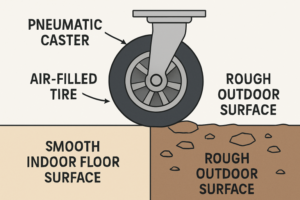When people step into the world of boating, one of the first terms they hear is “the hull.” The hull forms the foundation of any boat, shaping its strength, stability, speed, and durability. Without a strong and well-designed hull, a vessel cannot perform efficiently or keep its passengers safe. Over time, the phrase “the hull truth” has grown beyond its literal meaning. It not only refers to the physical truth of a boat’s hull but also to the broader realities of boating that every enthusiast must face: the costs, the maintenance, the safety concerns, and the balance between joy and responsibility. This article explores the hull truth in its fullest sense, delivering deep insights into hull design, the science behind it, real-world boating experiences, and the unfiltered truths that often get overlooked in glossy brochures and sales pitches.
Understanding the Hull: The Backbone of Every Boat
The hull is essentially the watertight body of a vessel. Everything else on the boat, from the deck to the engine, relies on the hull’s integrity. While boat buyers often focus on flashy features such as luxury cabins or powerful motors, seasoned boaters know that the real value lies beneath the surface. The shape, material, and condition of the hull determine whether a boat slices through waves gracefully or pounds uncomfortably in choppy seas.
There are several common hull types, each engineered for specific water conditions:
| Hull Type | Description | Best Use Case | Key Advantage | Limitation |
|---|---|---|---|---|
| Flat-Bottom Hull | Shallow and level bottom surface | Calm lakes and rivers | Excellent stability on still water | Poor handling in rough seas |
| V-Shaped Hull | Deep “V” design | Offshore and open seas | Smooth ride in waves | Consumes more fuel |
| Catamaran Hull | Two narrow hulls connected by a deck | Coastal cruising, fishing | High stability and speed | Requires wider docking space |
| Round-Bottom Hull | Rounded, displacement design | Sailing boats, larger ships | Efficient movement through water | Can feel “tippy” in small boats |
| Multi-Chine Hull | Combination of flat and angled surfaces | Recreational boats | Versatility | Less optimized for extremes |
Each hull type represents trade-offs between comfort, speed, cost, and efficiency. This is the first layer of the hull truth: no hull is perfect; it’s all about choosing what matches your boating goals.
Materials and Construction: What Hulls Are Made Of
Another key truth about hulls lies in their construction materials. Boat hulls are not all created equal.
- Fiberglass Hulls – The most common in modern recreational boats. Fiberglass is lightweight, durable, and allows for sleek designs. However, it can be expensive to repair if it cracks or develops structural weaknesses.
- Aluminum Hulls – Popular for fishing boats and smaller vessels. They are tough, resistant to corrosion, and lighter than steel. However, aluminum can dent more easily, and repairs require specific welding expertise.
- Wooden Hulls – Traditional and beautiful, wooden boats carry a nostalgic charm. Yet they require constant maintenance to resist rot, warping, and pests. Wooden hulls remind us of the truth that beauty often comes at the cost of labor.
- Steel Hulls – Used in larger ships and yachts due to their unmatched strength. Steel offers safety and durability, but it makes vessels heavier and demands careful rust prevention.
This leads to another hull truth: no matter what the hull is made of, ongoing maintenance is non-negotiable. Many first-time boat owners underestimate the amount of time and money required to keep a hull in seaworthy condition.
Hydrodynamics and Performance
The shape of a hull doesn’t just determine comfort; it directly impacts how efficiently a boat moves. The science of hydrodynamics plays a major role in performance, affecting fuel efficiency, top speed, and handling.
- Planing Hulls rise above the water at higher speeds, reducing drag. These are ideal for speedboats and watersports.
- Displacement Hulls push through water rather than riding above it, making them slower but more fuel-efficient. These are found in sailboats and long-distance cruisers.
- Semi-Displacement Hulls balance both styles, offering moderate speed and fuel use.
Boaters often learn the hard way that pushing a displacement hull beyond its designed speed is inefficient and costly. Similarly, using a planing hull in waters where you cannot reach high speeds wastes fuel and reduces comfort. This is a practical example of the hull truth: know your hull’s limits and operate within them.
Safety Considerations: The Hull Truth About Risks
The safety of passengers is directly tied to hull integrity. Cracks, leaks, poor construction, or neglected maintenance can compromise safety dramatically. Every boater must understand key truths:
- Regular Inspections – Even small hairline cracks can worsen quickly under stress. Inspections before and after outings help identify problems early.
- Weight Distribution – Overloading a hull or unevenly distributing weight can affect stability, leading to capsizing.
- Hull Fouling – The buildup of barnacles, algae, and marine growth affects performance and can damage the hull surface. Proper cleaning is essential.
- Collision Risks – Even durable hulls can be compromised by submerged debris, rocks, or other vessels.
The harsh truth is that many boating accidents could have been prevented with better hull care. The integrity of a hull is the foundation of safe boating, yet it is often overlooked until disaster strikes.
Maintenance: Preserving the Life of the Hull
Boat ownership is not just about cruising under the sun; it’s about consistent upkeep. Proper hull maintenance involves cleaning, painting, and inspecting to ensure long-term performance.
- Antifouling Paints: Applied to prevent marine organisms from attaching to the hull.
- Hull Polishing: Protects fiberglass and keeps surfaces smooth.
- Regular Haul-Outs: Boats should be periodically taken out of the water for a thorough check.
- Pressure Washing: Removes salt, algae, and dirt.
The hull truth is that maintenance costs often surprise new owners. It’s common to spend thousands annually just to keep a hull in prime condition. However, neglect leads to greater expenses down the road.
The Real Costs of Hull Ownership
The truth about hulls also extends to finances. Beyond the purchase price, a hull carries ongoing costs:
- Storage – Marina slips or dry storage fees can be expensive.
- Insurance – Hull condition influences premiums; damaged or poorly maintained hulls raise costs.
- Repairs – Even minor fiberglass repairs can cost hundreds of dollars, while major steel hull work runs into the thousands.
- Depreciation – Boats lose value quickly, especially if hull condition deteriorates.
Owning a boat is as much about financial responsibility as it is about enjoyment.
The Psychological Side: Expectations vs Reality
Another aspect of the hull truth is psychological. Many new boaters imagine endless carefree days on the water. While boating can be deeply rewarding, the reality includes early mornings spent scrubbing hulls, weekends lost to repairs, and trips canceled due to hull issues.
Yet, for those who accept these truths, the rewards are immense: a deeper connection to the water, a sense of mastery over a vessel, and unforgettable adventures. Recognizing the hull truth helps set realistic expectations, reducing frustration and increasing satisfaction.
Practical Tips for Boaters
- Choose the Right Hull for Your Purpose – Match your hull type to the waters you’ll frequent most often.
- Budget Wisely – Plan for maintenance and unexpected hull repairs.
- Invest in Preventative Care – Regular cleaning and inspections prevent bigger problems later.
- Learn Basic Hull Repairs – Minor fixes can be done yourself, saving costs and emergencies.
- Respect the Hull’s Limits – Don’t overload, overspeed, or neglect it.
Conclusion
The phrase “the hull truth” is more than a clever play on words—it’s a reminder that boating involves both joys and realities. From hull design and construction materials to hydrodynamics, safety, maintenance, costs, and expectations, the hull is at the center of it all. The truth is not always glamorous, but embracing it leads to smarter decisions, safer voyages, and more fulfilling experiences on the water.
Owning a boat means committing to a relationship with its hull, where care and respect return the favor in performance and safety. By understanding the hull truth, boaters can enjoy the water with open eyes and steady hands.
ALSO READ: GPTGirlfriend: Exploring AI Companionship, Technology, and Future Potential
FAQs
1. What does “the hull truth” mean in boating?
It refers to the realities surrounding a boat’s hull—design, safety, costs, and maintenance—that every boater must face.
2. Which hull type is best for rough seas?
V-shaped hulls are best suited for offshore and rough waters because they cut through waves smoothly and offer stability.
3. How often should a boat hull be inspected?
Ideally, hulls should be checked before and after every outing, with thorough inspections during seasonal haul-outs.
4. Why is antifouling paint important?
It prevents marine growth like barnacles and algae from attaching to the hull, which can damage surfaces and reduce efficiency.
5. Are wooden hulls still practical today?
Yes, but they require high levels of maintenance and care. They are more suited to enthusiasts who value tradition and aesthetics.









